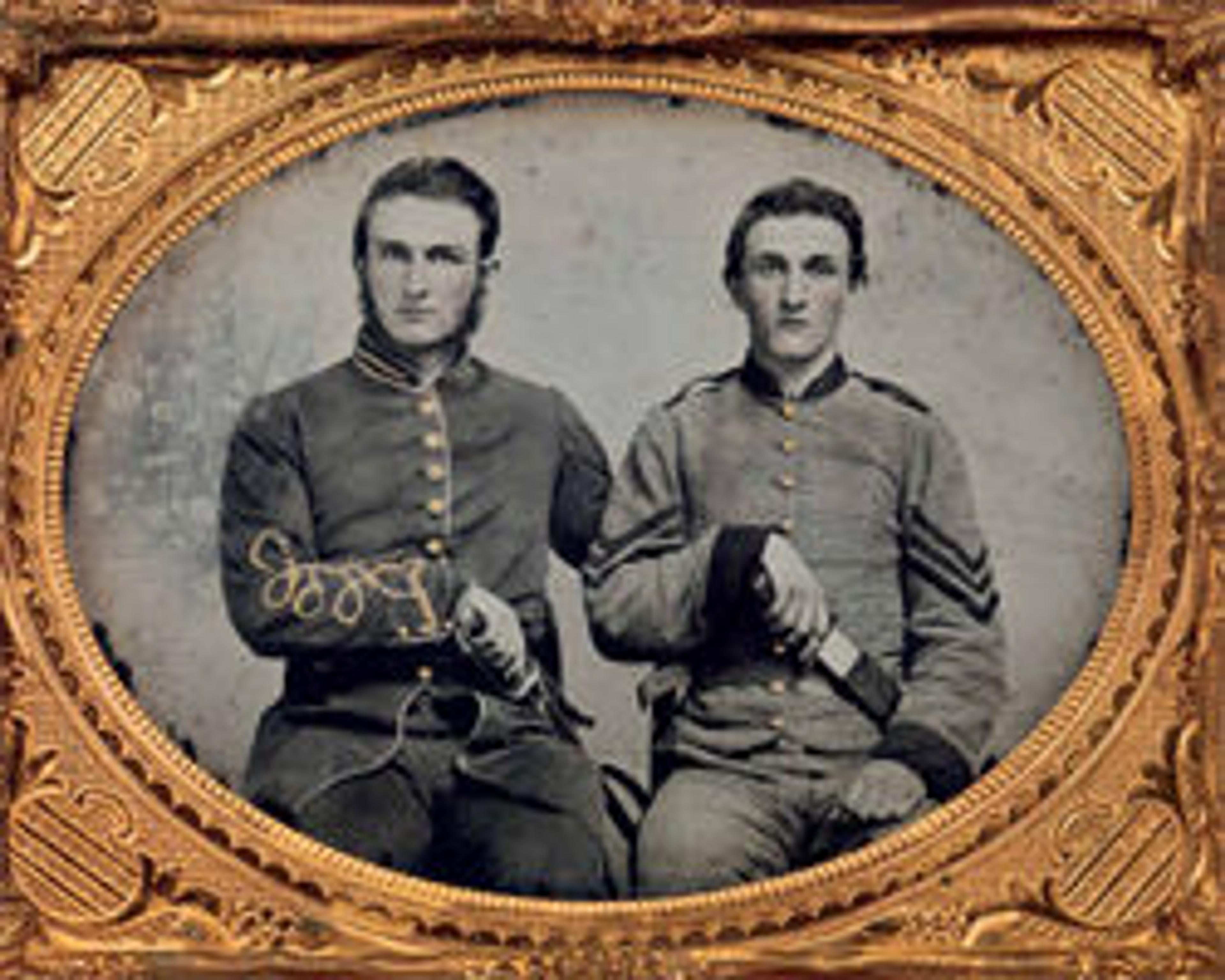Light Artillery, Sergeant Major
This hand-colored portrait provides a good look at the colors of war—at least as worn by the Union army. It comes from a set of photographs commissioned in 1866 by Montgomery Meigs, Quartermaster General of the United States Army during and after the Civil War. Known as "the army behind the army," the Quartermaster Corps is the army’s oldest logistical branch. Then and now it is charged with clothing, transporting, and sustaining large field armies far away from their base camps. Meigs understood the historical value of permanently recording the clothing (with accurate colors) and personal accouterments worn by soldiers and officers during the war. The portraits by Oliver H. Willard, still a relatively obscure photographer, all show the same soldier/actor wearing a wide variety of uniforms and posing with the tools and emblems of his service and rank.
Artwork Details
- Title:Light Artillery, Sergeant Major
- Artist:Attributed to Oliver H. Willard (American, active 1850s–70s, died 1875)
- Date:1866
- Medium:Albumen silver print from glass negative with applied color
- Dimensions:Image: 20.3 x 15.2 cm (8 x 6 in.)
Mount: 33.3 x 25.7 cm (13 1/8 x 10 1/8 in.) - Classification:Photographs
- Credit Line:Purchase, Saundra B. Lane Gift, in honor of Charles Isaacs, 2010
- Object Number:2010.36
- Curatorial Department: Photographs
More Artwork
Research Resources
The Met provides unparalleled resources for research and welcomes an international community of students and scholars. The Met's Open Access API is where creators and researchers can connect to the The Met collection. Open Access data and public domain images are available for unrestricted commercial and noncommercial use without permission or fee.
To request images under copyright and other restrictions, please use this Image Request form.
Feedback
We continue to research and examine historical and cultural context for objects in The Met collection. If you have comments or questions about this object record, please contact us using the form below. The Museum looks forward to receiving your comments.
